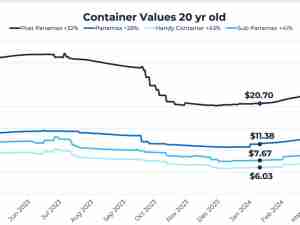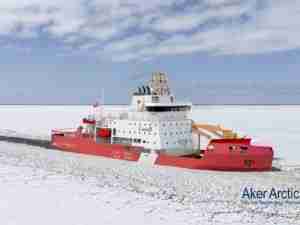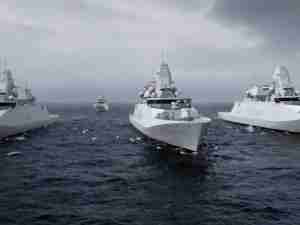A new and larger port authority is being considered for British Columbia that would include the Vancouver Port Authority, the Fraser River Port Authority and the North Fraser Port Authority.
The concept is said to have the support of both the federal and provincial governments.
Allan Baydala, president and CEO of the North Fraser Port Authority, said the goal of the new authority would be to better manage financial and intellectual port resources in the province's Lower Mainland to accommodate the expected growth in Asian traffic. Baydala said the three port authorities will first create a business plan to determine whether an all-inclusive port authority would have revenue-generating advantages. Being smaller than either the Vancouver Port Authority or Fraser River Port Authority, North Fraser must consider the priorities of all stakeholders, he said.
Land use opportunities for new container terminals, or a facility to handle the ship and barge traffic that would be generated by the recent Short Sea Shipping agreement between Canada, the US and Mexico, are all under consideration.
Baydala said no decisions or commitments have been made so far; 'but it's always a good idea to look at new opportunities.'
If a larger port authority is created for British Columbia's Lower Mainland it will include both salt and fresh water ports and a massive amount of waterfront property.
The Vancouver Port Authority alone, which is easily the largest of the three, is responsible for 233 km of coastline stretching from the City of Vancouver almost to the US-Canada border. Three major container terminals are port tenants as are three large bulk loading facilities, two cruise ship terminals, several grain terminals and a major break bulk facility. Last year the Port of Vancouver handled about 76.5 million tonnes of cargo.
Fraser River Port Authority is responsible for shoreline along the Fraser River, including properties in Delta, Richmond, Surrey and Annacis Island. Tenants include several large auto ports - making Fraser Port the largest auto port in Canada - Fraser Surrey Docks, a major break bulk facility which recently added a modern container handling capacity, several large logistic centers and warehousing facilities, including HBC Logistics, which distributes products to the Hudson Bay chain of retail stores across Canada. With this level of business, the Fraser River Port Authority claims the port to be the second largest port in Canada, next to Vancouver.
North Fraser Port Authority is the smaller of the three and is responsible for traffic and industrial development on the 'north arm' of the Fraser River extending from the University of British Columbia, overlooking the Strait of Georgia, to the city of New Westminster to the east. North Fraser Port Authority property runs through the cities of Vancouver, Burnaby, Richmond and New Westminster. Its traffic consists mostly of logs and wood fibre, however even though the port is the smallest it still encompasses roughly 920 hectares of land and water lots and, in 2004, handled nearly 18 million tonnes of cargo. Next to logs and wood products the port also handled over two million tonnes of aggregate and cement products generated by several major cement plants upstream.
It's clear that while Vancouver already claims to be the largest and busiest port in Canada, the combined traffic and real estate that would become part of a new 'super port authority' would easily surpass all other ports north of the Canada-US border and would make the Lower Mainland port a single, resource-rich contender, for Asian traffic.








